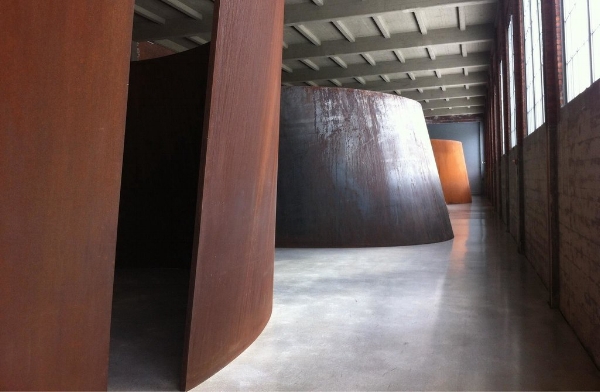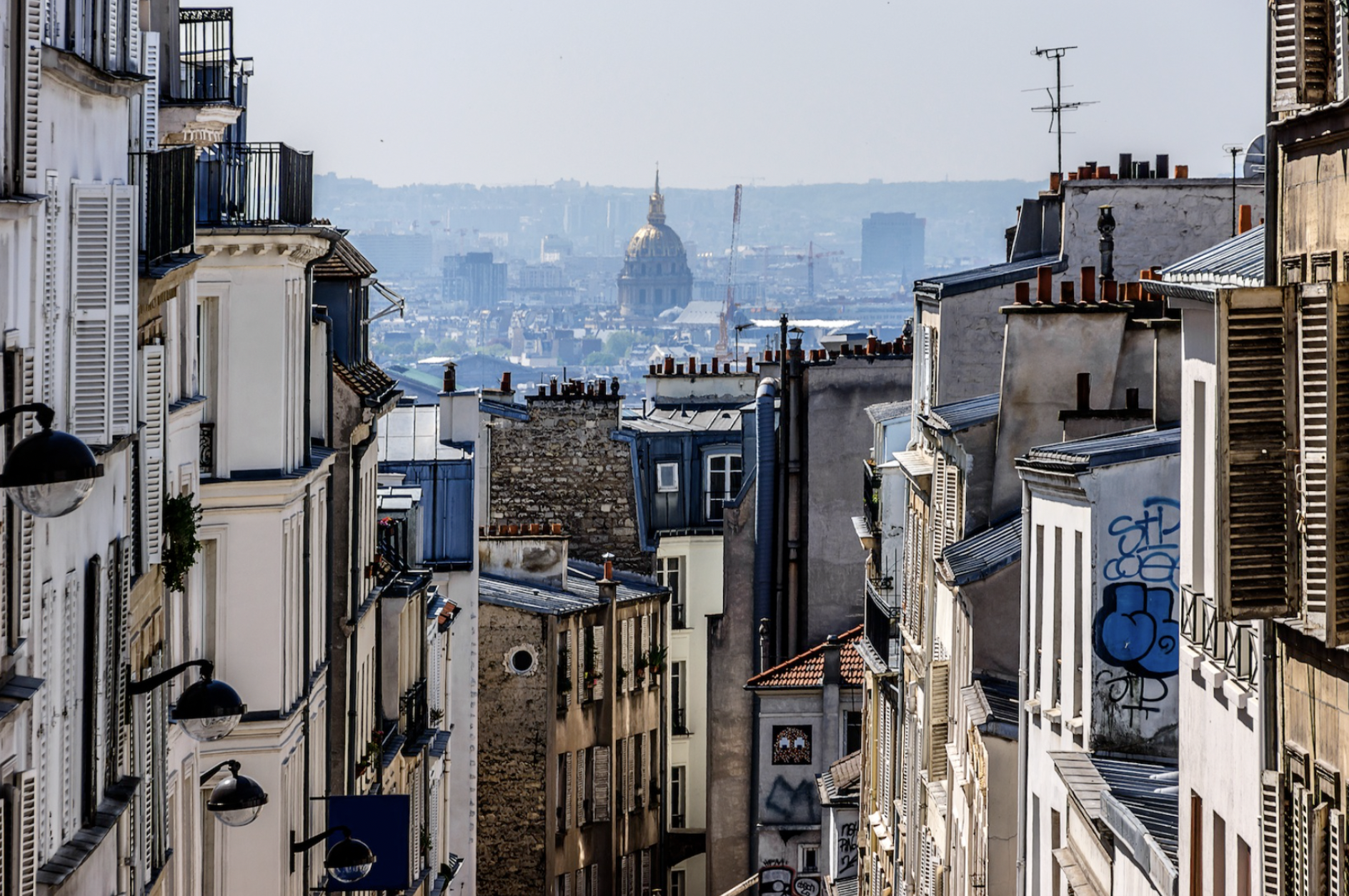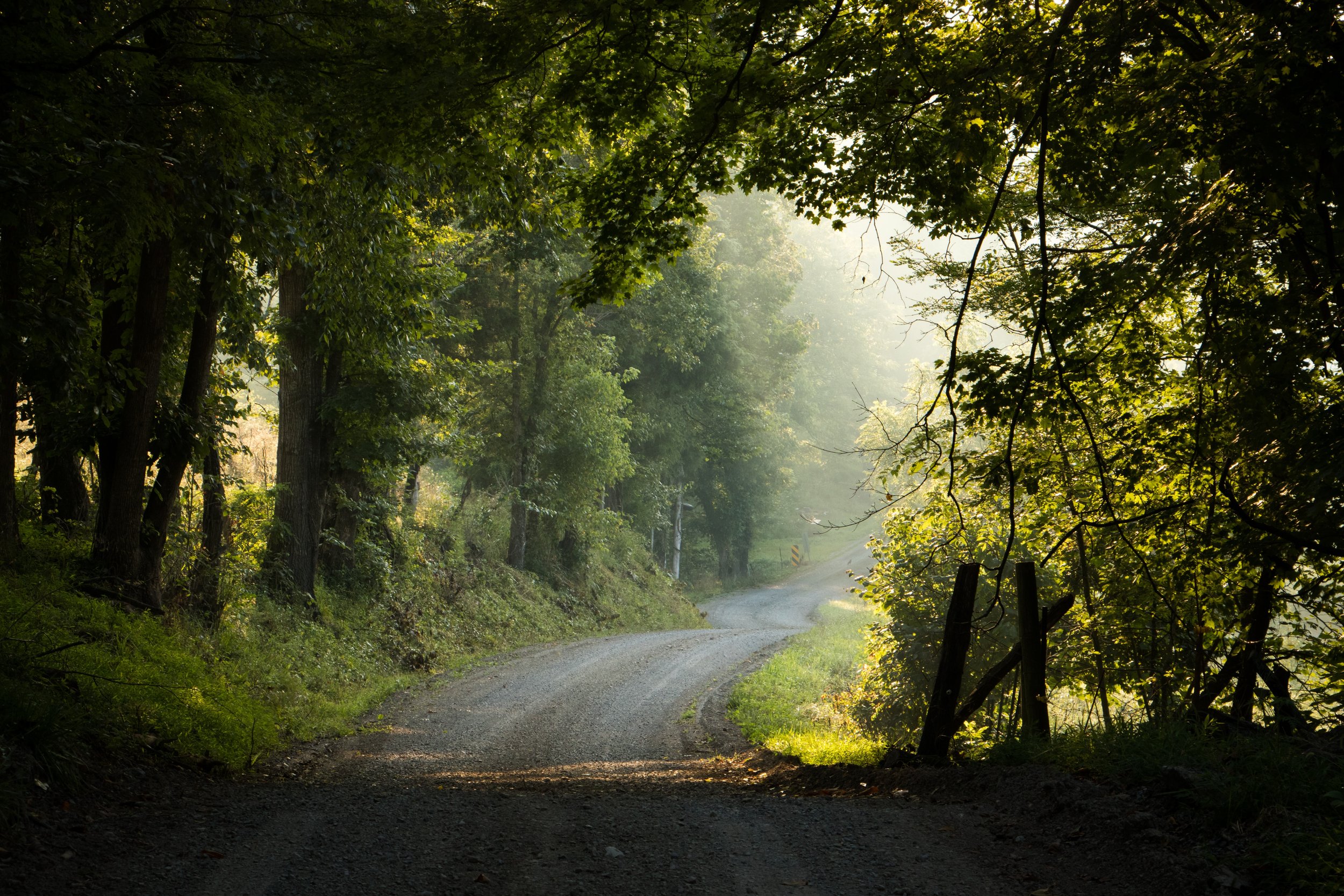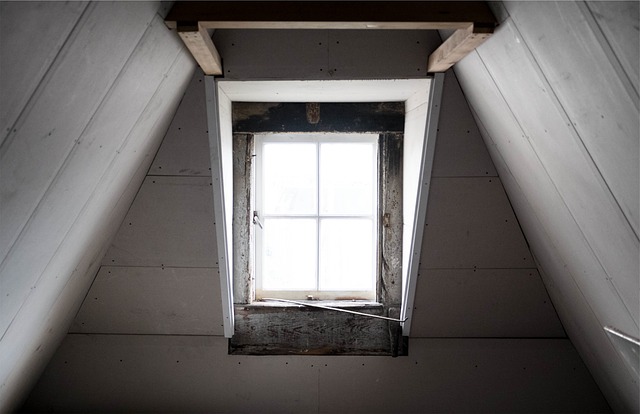On Love, Leaving, and Richard Serra

The first time I was inside a torqued ellipse, I had just fallen in love. It was a golden morning late in September, an Indian summer weekend that felt stolen. We had gone upstate.
We, he and I, were at Dia Beacon, the factory-turned-museum in the Hudson River Valley in New York. It was early and empty, and the light slanted dreamily. Dia is an escape in the truest sense of the word, an escape both from the world and into contemplation. I was there, looking at art, in part to avoid thinking about what was going to come next, or what had come before. It helped.
Outside, the world glowed green-gold, on the verge of turning orange, and in a few days, I would take a new job in San Francisco. I had recently packed an apartment in New York. I had recently ended a relationship. I was suddenly and surprisingly catapulted into a love infused with urgency and uncertainty. I felt restless. There were not enough minutes in the day, so we stayed up a lot of nights. Coming upstate was a kind of folly, too; we were so new to each other for a trip like this. I remembered this sometimes as we wandered the museum, startled that we were here.
Torqued Ellipses ©Richard Serra/Artists Rights Society (ARS) Photo: EdS
It is easy to stop being surprised in a museum. This is one of the problems with how art is often displayed, I think. But Richard Serra’s Torqued Ellipses were a surprise, an experience unlike anything else I had ever seen. They are three hulking whorls of steel that curl in spirals. At first, like much of his work, they appear heavy and dense. They look impressive and industrial and cold. But there’s a passage into them, and inside, they seem weightless. I had the sensation that the walls of metal were as thin as ribbons, and I was floating. The colors intensified: gun-metal gray, an impossible cobalt, bright orange rust streaked like tears. At the center, the ellipse was a shelter, a hurricane’s eye, an intake of breath. I wanted to lay down there, to hold his hand, never to leave.
*
Serra’s Torqued Ellipses are not about me. There is an impulse I have, as a viewer—I think many of us have it, but I’ll speak for myself—to relate art to my own life. There is something strange about this: I am looking at a piece of metal and I am thinking about falling in love and moving away, and somehow they become linked, so the piece of metal is really about me. Is this narcissism? Probably in some way, yes.
Serra, in particular, would probably not like this impulse to see his work through the lens of my life. When he talks about creating his Torqued Ellipses, he talks at length about questions of structure and material. The ellipses were difficult to construct; he contends that no such shape has ever existed in architecture or sculpture. It was a conquest of sorts for him, to create one. Above all else, he cared about volume. He was not interested, particularly, in the effect the piece would have. “While working on an experimental form, I don’t care about the aesthetics of the work—that seems to come after the fact, if at all,” Serra said in an interview. He said that when he walked inside one of his ellipses, he was as “startled as anyone” by the disorienting impact of the space.
Torqued Spiral ©Richard Serra/Artist Rights Society (ARS) Photo: Lorenz Kienzle
I felt strangely sad to learn this, as though I had missed some of the point of the work, reveling in the odd stillness of their interiors. My desire to describe his work also misses the point, he said. “As soon as you start reducing it to how you see it, it takes away from the fact that your body and your haptic senses don’t register that way,” he said. “Nor can such experiences be distilled into words. The words are always made up behind the experience, after the experience.” (He had some good words for them, though; at one point he called them “the skin of the void.”)
I thought of some lines from Rachel Kushner’s The Flamethrowers, a throwaway piece of brilliant criticism in the mouth of the main character, whose boyfriend makes metal boxes in the style of Donald Judd. She observes, “Minimalism is a language and even having gone to art school I barely spoke it myself. I knew the basic idea, that objects were not meant to refer to anything but what they were, there in the room. Except this was not really true, because they referred to a discourse that artists such as Sandro wrote long essays about, and if you didn’t know the discourse, you couldn’t take them for what they were, or were meant to be. You were simply confused.”
The weekend I visited Dia, I didn’t speak Serra’s language, or I spoke it only casually. I was contextless, thinking of myself, thinking of the person I loved and would soon leave. Something in me was stilled by the circles of metal. The torqued ellipses became part of a certain fabric of my life, a language of sorts that I was learning with someone else. We were building a trove of things that were interesting to us, that we had seen together, that seemed to intersect in magical and surprising ways: Judd’s metal boxes, Maggie Nelson’s writing, a poem by James Merrill, a song by the Paper Kites, Serra’s ellipses, especially Serra’s torqued ellipses.
Sequence ©Richard Serra/ Artists Rights Society (ARS) Photo: DsHatzi
*
These words are behind the experience, and many miles after it, back and forth between San Francisco and New York. In San Francisco, there is a large installation of Richard Serra’s work on the ground floor of SFMOMA. I discovered it the weekend I moved there. It was not a torqued ellipse, but a set of two massive rust-red steel structures that allows you to enter and pause, surrounded in sheaths of metal. Seeing it in this city, which felt nothing like home, which was far from the person I loved, my heart swelled. Here was something that belonged to us, I thought, though of course that wasn’t true.
I often struggle with the role I play in my experience of art. I dislike my tendency to make it so quickly about me, but I also think it matters how we see things. We go to Starbucks, then we have a fight about the car keys, then we walk into a gallery and we pause in front of a painting that moves us, then we remember a dream from childhood, and then we get a phone call and our lives rearrange. These things become bound up in each other, strands of tangled subjectivity.
Serra is not easy to write about; he is not approachable; he is difficult. This is perhaps related to what I first liked about his work--its coldness provided a kind of relief. I could enter into the ellipse and feel anything and it would remain as it was. In the intervening time, I have tried to approach Serra’s work from different angles. I have read his interviews and art historians’ writing about his work. I watched a video of him and his assistants throwing molten steel against a wall, and I was impressed with the sheer physicality of it. I have tried to learn the language of minimalism, and sculpture more generally.
Still, my experience of his work remains rooted in that contextless autumn weekend at Dia Beacon. I entered that holy interior, that weightless mottled cathedral of rust, that suspension of time and narrative--and then emerged on the other side, out into the winking light of late fall, calmed and stilled and moved. I can carry that with me anywhere.
ABOUT THE AUTHOR
Sophie Haigney is a journalist and critic who writes mostly about art and technology. Her work has appeared in The New York Times, New York Magazine, The New Yorker, The Baffler, The Economist, and elsewhere. She is editor-at-large for Off Assignment. You can find her on Twitter at @SophieHaigney.
Header photo of Torqued Ellipse by Leger ©Richard Serra /Artists Rights Society (ARS)














